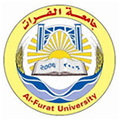آخر الأخبار
سيمياء التوتر في قصيدة "الجسر" لمحمود درويش
issue 45, Cite as
The tension semiology on Mahmoud Darweesh poem "The Bridge"
| authors |
Dr. Mohammed Masoud - Dr. Rodan Moree |
| Abstract |
Projects stage shaped the practical section of postmodernism semiology. This stage followed the Gains stage in Paris's semiology school which was revived by Gremas. Projects stage included various projects depended on semiologic trends closer to the human entity which is considered as the basis for literature and science activities and all the studies related to them. This stage brought the human entity and all the whims and emotions that are connected with it back to the field of semiologic studies after it was absent in the semiology of work in the stage of establishing gains. Projects stage introduced new trends: whims semiology, entity semiology and tension semiology. Tension semiology combines both work semiology which deals with events and things, and whims semiology which deals with human entity's tendencies and its emotions. By doing so, it achieved studying both the personal and the objective things simultaneously as per a tensional plans that explain the movement of semiologic signs in their textual collaboration. Tension and range axes are among its procedural tools. Tension axis studies the whims, emotions and conscience (the axis of human entity). While the range axis studies everything that is related to human entity in its objective world including quality, quantity and variety in time and place. When the two axes go up the direction of tension would be straightforward. While when one axis goes up and the other goes down the tension direction world reverse. This research applied the tension semiology on Mahmoud Darweesh poem "The Bridge" which portrays the suffering of Palestinians who long for achieving their dream or returning back to their country. Key words: semiology, postmodernism, tension, Darweesh, the bridge . |
| الكاتب |
د. محمد مسعود - د. رودان مرعي |
| الملخص |
شكّلت مرحلة المشاريع الحيّز التطبيقي لسيمياء ما بعد الحداثة، وقد جاءت بعد مرحلة المكاسب في مدرسة باريس السيميائية التي أنعشها غريماس. وقد تضمّنت مشاريع متنوّعة استندت إلى اتجاهات سيميائية أقرب إلى الذات الإنسانية التي تعدّ أساساً لفعاليات الأدب والعلوم وما يناط بها من دراسات. فقد أعادت هذه المرحلة الذات وما يتصل بها من أهواء وانفعالات إلى ميدان الدراسة السيميائيّة بعدما كانت غائبة في سيمياء العمل في مرحلة المكاسب التأسيسية. وقدمت مرحلة المشاريع اتجاهات جديدة منها: سيمياء الأهواء، سيمياء الذات، سيمياء التوتر.
وسيمياء التوتر تجمع بين سيمياء العمل التي تهتم بالأحداث والأشياء وسيمياء الأهواء التي تهتم بميول الذات وانفعالاتها، فحققت بذلك دراسة الذاتي والموضوعي في آن معاً وفقاً لمخططات توتريّة توضح حركة العلامات السيميائيّة في تضافرها النصي. ومن أدواتها الإجرائية اعتماد محوري الشدّة والمدى؛ إذ يدرس محور الشدّة الأهواء والانفعالات والوجدان (محور الذات)، في حين يدرس محور المدى كل ما يتعلّق بالأشياء من حول الذات في عالمها الموضوعي عدداً وكميةً وتنوّعاً في الزمان والمكان. وعند ارتفاع المحورين يكون اتجاه التوتر مباشراً، وحينما يعلو أحدهما وينخفض الآخر يكون اتجاه التوتر معاكساً. وقد طبّق البحث سيمياء التوتر على قصيدة "الجسر" للشاعر محمود درويش التي تصف معاناة الفلسطينيين الذين يسعون لتحقيق حلمهم بالعودة إليها. كلمات مفتاحية: سيمياء، ما بعد الحداثة، توتر، درويش، الجسر. |














